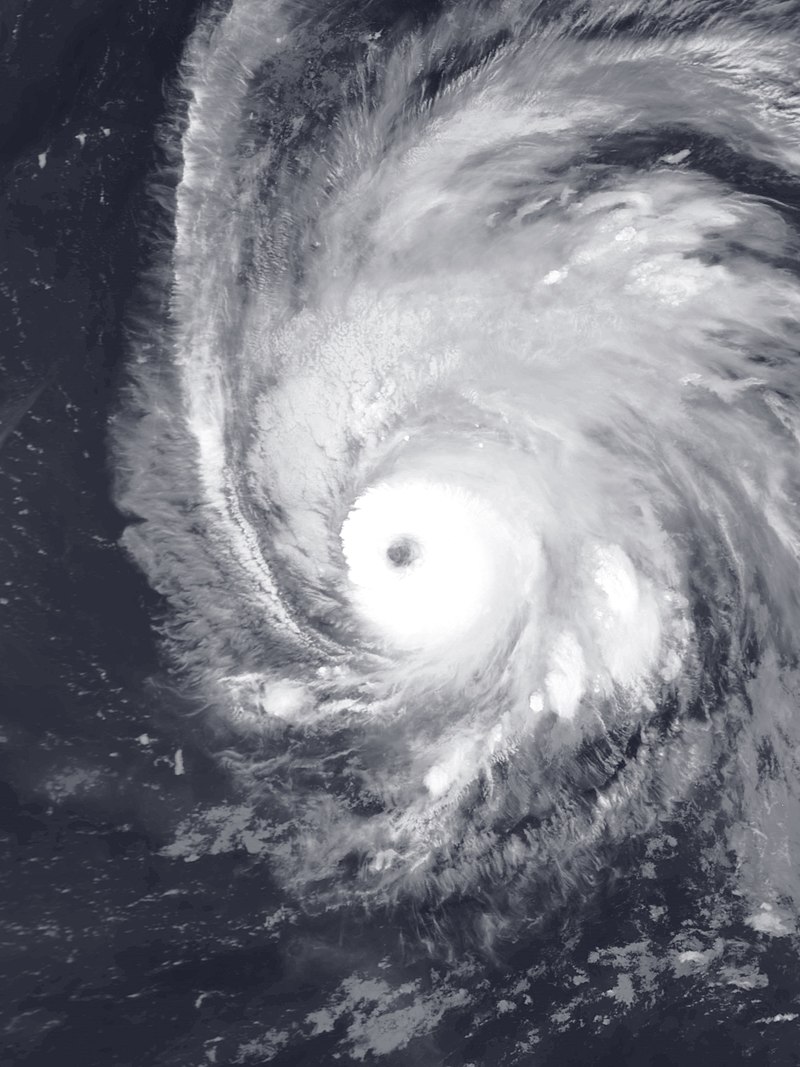This research article focuses on Hurricane Karl, which occurred during the 2004 Atlantic hurricane season. Karl was a formidable Cape Verde hurricane and marked the eleventh named storm, eighth hurricane, and the sixth and final major hurricane of that season. Forming from a robust tropical wave off the coast of Africa on September 16, Karl rapidly intensified, reaching major hurricane status on two occasions. Its peak intensity occurred on September 21 as a strong Category 4 hurricane, with maximum sustained winds of 145 mph (233 km/h). The hurricane weakened while moving northward, becoming extratropical on September 24 in the north Atlantic before being absorbed by another system on September 28. The Faroe Islands were minimally affected by the extratropical storm, with no reported damage or fatalities.
Introduction: Hurricane Karl originated from a potent tropical wave that emerged off the coast of Africa on September 16, 2004. It underwent rapid intensification, attaining major hurricane status twice during its lifespan. Karl’s peak intensity as a powerful Category 4 hurricane on September 21 posed a significant threat to the areas in its potential path. This article explores the impact of Hurricane Karl on the regions before, during, and after landfall, as well as the associated damage, casualties, and cost of recovery.
Pre-Landfall: As Hurricane Karl developed in the eastern Atlantic, it posed a potential threat to the Caribbean islands and the southeastern United States. However, due to favorable atmospheric conditions and its track, Karl remained over open waters and did not make direct landfall on any populated areas. Nevertheless, coastal regions were advised to closely monitor the hurricane’s progress and prepare for possible impacts.
During Landfall: Hurricane Karl’s track took it on a northward trajectory, away from land, resulting in minimal direct impacts on populated areas. Consequently, there were no reported casualties or significant damage during landfall. However, it is important to note that indirect effects such as rough surf, high tides, and rip currents may have affected coastal areas, warranting caution and adherence to local advisories.
Post-Hurricane Impacts: Following its transition into an extratropical storm, Hurricane Karl continued its northward movement, eventually affecting the Faroe Islands. While the storm did impact the islands, no significant damage or casualties were reported. The extratropical remnants of Karl were eventually absorbed by another weather system, dissipating its remaining energy.
Rebuilding and Recovery: Given that Hurricane Karl did not make direct landfall on any heavily populated areas, the cost of cleaning and rebuilding was minimal. However, it is important to note that the impact of hurricanes extends beyond physical damage. The resilience of communities, emergency response preparedness, and effective communication systems contribute significantly to minimizing potential losses during such events.
Protective Measures for Future Hurricanes: To be adequately protected if another hurricane like Karl threatens landfall in your area, it is crucial to follow these guidelines:
- Stay informed: Regularly monitor updates from local meteorological agencies and heed any warnings or evacuation orders issued.
- Emergency preparedness: Develop a comprehensive emergency plan for your family or community, including provisions for food, water, medications, and important documents. Prepare a disaster supply kit and ensure it is easily accessible.
- Secure your property: Safeguard your home by reinforcing doors and windows, trimming trees, and securing loose objects that may become projectiles in strong winds.
- Evacuation planning: Familiarize yourself with evacuation routes, shelters, and emergency contacts in your area. If advised to evacuate, do so promptly and follow designated routes.
- Insurance coverage: Review your insurance policies, ensuring they provide adequate coverage for hurricane-related risks. Consider flood insurance, as standard homeowner’s insurance typically does not cover flood damage.
Interesting Fact: As a direct result of Hurricane Karl in 2004, the Faroe Islands experienced an unusual weather phenomenon known as a “weather bomb.” This term refers to a rapidly deepening extratropical cyclone that intensifies explosively within 24 hours. While the extratropical remnants of Hurricane Karl were relatively mild, the atmospheric conditions contributed to the development of this rare weather event, causing unique and notable changes in the Faroe Islands’ weather patterns.
In conclusion, Hurricane Karl of the 2004 Atlantic hurricane season was a large and powerful Cape Verde hurricane that posed a significant threat during its peak intensity. Although it did not make direct landfall on populated areas, it is essential to remain vigilant and prepared for future hurricane events by following recommended protective measures. Understanding the impacts of historical hurricanes allows us to better anticipate, mitigate, and respond to the potential challenges posed by these formidable storms.




Leave a Reply